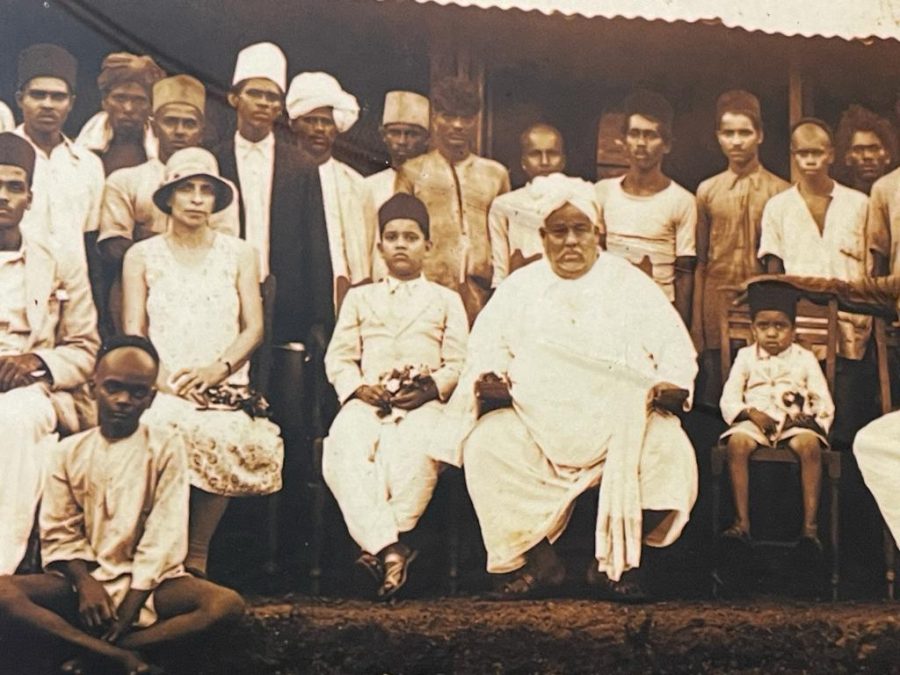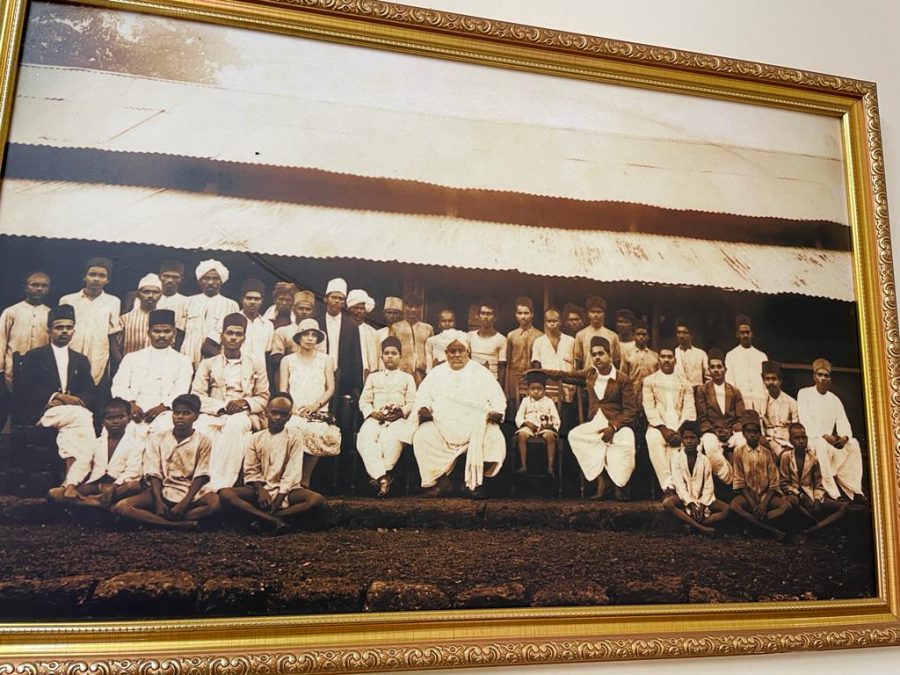The Untold Story of Josephine Hogas and the Cashew Revolution
An Intrepid American in Goa
The American lady in this picture is Ms. Josephine Hogas, an adventurous woman who travelled from Manhattan to Goa and collaborated with the Zantye family for the export of cashew kernels. She likely discovered the potential of cashew processing by witnessing how it was made.

In 1917, Goa was still Portuguese territory, and it is evident that Josephine resided in Panjim city. Meanwhile, Malvan (in present-day Maharashtra) was under the Bombay Presidency of British India. It is believed that the Zantyes were among the first to establish a factory for cashew kernel processing—possibly the earliest organized venture of its kind.
This photograph still hangs in the office of Mr. Suresh Zantye, who continues the family business into its fourth generation.
A Chance Encounter and a Lost Story
The tale of Josephine Hogas surfaced unexpectedly during a casual conversation about cashews. A stranger casually dropped her name, sparking my curiosity. I had always been intrigued by stories of innovation and entrepreneurship, and this was one I had to uncover.
Mr. Suresh Zantye shared an oral account of how his grandfather began cashew processing in Malvan and Bicholim (Goa) around the same period. The method? Pan roasting—a groundbreaking technique where raw cashews were roasted over a perforated metal sheet placed on a fire made from jungle wood, supported by four stacks of laterite stones.
This was dangerous work, both physically and mentally—playing with fire, quite literally.
Historical Context: Marathas, Portuguese, and the Cashew Trade
Long before this era, the Sawantwadi region (ruled by the Bosleys) extended up to Belgaum’s borders. The Muslim emperors held sway till Bijapur, with frequent skirmishes along Maratha territories stretching to Hyderabad. Goa, under Portuguese rule, was a distinct territory.
The Zantye family had their roots in Bicholim, just 20 km from Maharashtra’s border. Travel then was by horse carriages or bullock carts, yet trade routes like Bicholim to Malvan were well-established, facilitating the cashew trade.
The family’s original surname was Prabhu, but “Zantye” was likely added as a Portuguese-sounding suffix for ease of business. These aren’t mere speculations—there are written records, possibly worthy of a museum, marking them as India’s first cashew business family.

Josephine Hogas: From Trader to Innovator
Josephine Hogas wasn’t just a trader—she was a classic entrepreneur. The allure of cashews must have ignited her imagination. Though her exact role remains unclear, this year marks the 100th anniversary of organized cashew manufacturing in Mangalore.
Around the same time, Pierce Leslie India Limited (based in Cochin/Mangalore) expanded from coffee into cashews. By 1925-26, cashew exports to the UK were well-established.
However, a persistent problem plagued the industry: Infestation. The first shipment to the USA arrived infested, but instead of giving up, American ingenuity saw it as a challenge to overcome.
Solving the Infestation Puzzle
Josephine returned to Panjim, determined to find a solution. A tennis club plaque still commemorates her presence there. She deduced that removing oxygen—the lifeline for pests like Tribolium Castaneum—was key.
Mr. Jeffrey Abels of FTS Laboratories could verify whether this pest has troubled cashews for 117 years. Her innovation aligns with classic theories of entrepreneurship—turning obstacles into opportunities.
The Vita Pack Machine: A Legacy
Vita Pack Corporation (Josephine’s buyer) later exported a specialized machine to India. Even today, Indian workshops replicate this “Vita Pack machine”—a marvel of engineering that deserves academic study.
The Evolution of Cashew Trade
Initially, cashews were shipped in KO-type tins (Kerosene Oil tins), sturdy enough for a 6,000-mile sea journey. Only in 1984, with Sealand Corporation’s containers, did packaging shift to paper cartons.
This story deserves a documentary—perhaps by Discovery Channel or National Geographic—tracing the commercial geography of cashews, from Kollam’s barges to Cochin’s ports, and finally to Manhattan.
A Century of Cashew Enterprise
This is the story of 108 years of perseverance, innovation, and global trade. Josephine Hogas stands out as perhaps the first woman to solve a critical food preservation problem in the cashew industry.
Her work spurred factory expansions across India’s west coast, with Mangalore emerging as the hub of cashew innovation.

Final Thoughts
At its core, this tale is about human ingenuity—how ideas, observation, and determination bridge local needs with global commerce. The potential for innovation remains vast, and stories like Josephine’s remind us that entrepreneurship is timeless.
GGP
27th April 2025